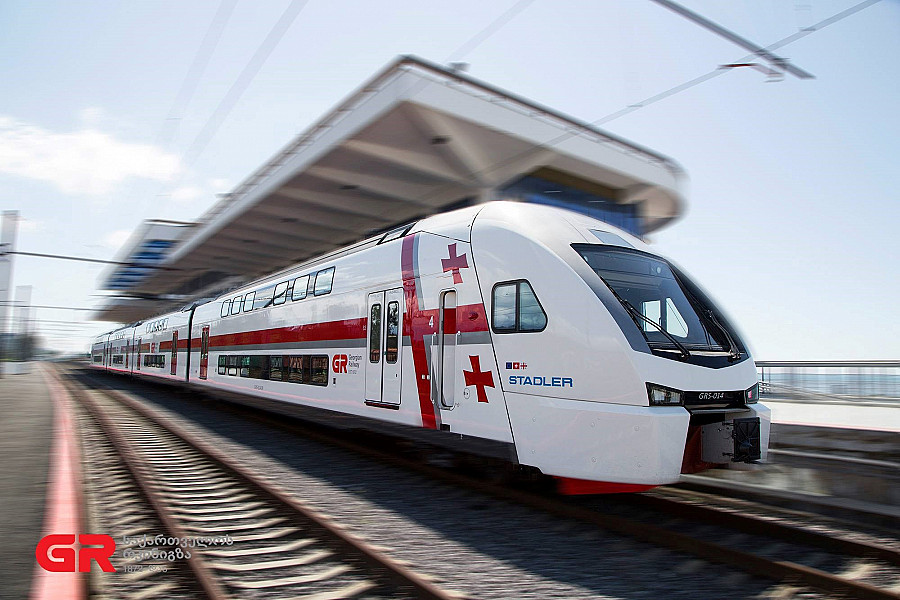The ongoing development of digital technologies triggers constant changes in the pace of life, mobility and economic activities. With the increasing speed of daily life, travel speeds must also increase to keep up. Some countries look to bullet trains and mega projects like the Hyperloop to significantly accelerate travel speeds. Migration from rural to urban areas has skyrocketed and is predicted to reach at 60% by 2030. Relatively small countries, like the Netherlands, have resorted to an interesting strategy – managing urban mobility through the development of fast regional trains which support long-distance commuting. Rail travel, as one of the most eco-friendly methods of public transport, is not outdated, but in fact is becoming the future of sustainable economies. The electrification of national railway lines and increasing travel speeds make trains an even more favorable means of public transport. There are already robust discussions on the advantages of rail travel over air travel.
Alongside these global trends, Georgian Railway greets a new decade with many challenges. The delayed modernization of the Tbilisi-Makhinjauri railway line (Tbilisi-Batumi connecting line), which started in 2011, is still ongoing. The project includes the construction of 38km of new rail and reconstruction of 23km of existing railway line. According to Georgian Railway, 86% of total work was completed by December 2018, and promises have been made to finish the project in 2020. However, the current pace of work calls that deadline into question. One justifiable circumstance that hindered the construction was related to private properties on land designated for new railway lines. The Georgian Ministry of Economy eventually solved the problem through the expropriation of privately owned land. After the completion of the modernization, the current route from Tbilisi to Batumi will be shortened by 1 hour to just 4 hours. This is positive news indeed, however the competitive advantage of regional rail is unclear, since the new east-west highway, which is scheduled for completion by 2024, will allow cars to cover the distance between the Red Bridge and Sarpi (E60; E70- approximately 445 km) in 4-4.5 hours.
Georgian Railway served 3 million passengers in 2019, setting a new record. This data is less impressive compared to the Eastern European countries’ statistics, not to mention Western Europe states. Estonia transported more than 8 million passengers in 2019, Latvia-more than 17 million people in 2017 and the Netherlands up to 360 million passengers in 2019. Georgian Railway currently operates approximately 69 stations; most routes are domestic, with the exception of links to Azerbaijan and Armenia.
It has been 3 decades since regional rail operated in the heart of the eastern Georgia –Kakheti, which is one of the demanding tourist destination. Kakhetians are deprived of all public goods that a railway can bring to a region. Public statements have been made about the rehabilitation of the Kakheti railway, but no tangible steps have yet been made in that direction. Existing national rail infrastructure does not allow for a fast and comfortable commute. It takes 4 hours and 10 minutes to cover the 158km between Tbilisi and Borjomi; passengers need 1 hour and 5 minutes to travel from Tbilisi to Gardabani (distance-43km).
The majority of economic activities in Georgia are concentrated in several big cities (Tbilisi, Batumi, Kutaisi, Rustavi) and most regions do not have sufficient financial resources to boost the local economy. Therefore, the country needs a system that will support the distribution of economic benefits to the small cities, villages and towns. Despite the development of digital industries, most jobs still require the physical presence of employees. A well-developed regional rail system will allow people to live in smaller, more rural villages and towns while working in the big cities. For example, a fast regional rail system with a flexible schedule adapted to the needs of commuters will make it possible for residents of Borjomi, Khashuri, Marneuli and Kachreti to live in their hometowns and commute to work in Tbilisi or Rustavi every day. The possibility of faster travel will have many positive effects: stimulating the advancement of the tourism industry; including rural settlements in more complex, diverse, and stronger economic activities; reducing the number of vehicles on the roads, and thus emissions; accelerating the creation of new businesses; support the effective implementation of the newly adopted Decentralization Strategy 2020-2025.
Georgia took on a number of commitments by signing the Association Agreement with the EU in 2014, including to further develop the national railway system. Even beyond of the timeline of the association process, though, it is essential for Georgia to devote resources to the creation of an effective modern railway. The government of Georgia should prioritize the modernization of old railway systems and the building of new lines at the same level as road infrastructure. Efficient allocation of governmental funds, loans and grants from the international donor community, and effective management of the project is necessary to prevent delays in completion of such work. In conclusion, launching the Baku-Tbilisi-Kars railway will greatly benefit the development of regional rail in the southern Georgia. There is a hope that all directions, considering the landscape of the region, will be well connected in Georgia in the near future.
This article is not based on a feasibility study. Instead, it considers international good practices and Georgia’s geographical, social, demographic, and economic characteristics.

